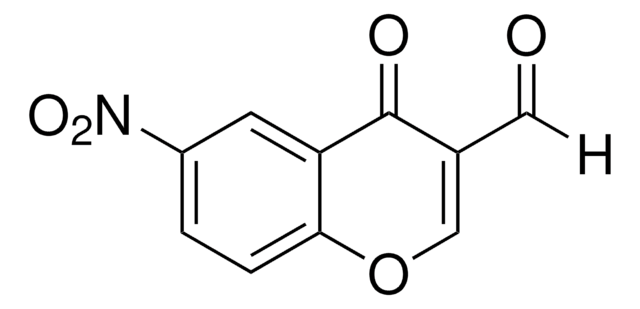About This Item
Recommended Products
Assay
97%
form
solid
mp
127-130 °C (lit.)
solubility
DMF: soluble(lit.)
dichloromethane: soluble(lit.)
SMILES string
OC(=O)c1ccc(CBr)c(c1)[N+]([O-])=O
InChI
1S/C8H6BrNO4/c9-4-6-2-1-5(8(11)12)3-7(6)10(13)14/h1-3H,4H2,(H,11,12)
InChI key
QMAHVAFURJBOFV-UHFFFAOYSA-N
Looking for similar products? Visit Product Comparison Guide
Related Categories
General description
Application
- As a reactant in the synthesis of 4-bromomethyl-3-nitrobenzoic acid succinimide ester (BNBA-SE).
- As a reactant in the synthesis of 4-(2-hydroxyethylmercaptylmethyl)-3-nitrobenzoic acid.
- As a reactant in the synthesis of decyl 4-(bromomethyl)-3-nitrobenzoate.
- As a reactant in the synthesis of 4-((2-(hydroxymethyl)phenylamino)methyl)-3-nitrobenzoic acid.
- As a thiol photo-deprotection reagent.
- As a UV-cleavable reagent to functionalize polyacrylamide acryl hydrate (PAAH).
- As a photocleavable linker to form localized photoinversion of surface charges inside the colloidal crystal.
- As a starting material in the synthesis of 2H-indazole based library using parallel solution-phase methods.
- As a reactant in the synthesis of (N-allyloxycarbonyl)-5-aminopent-1-yl 4-bromomethyl-3-nitrobenzoate.
Signal Word
Danger
Hazard Statements
Precautionary Statements
Hazard Classifications
Skin Corr. 1B
Storage Class Code
8A - Combustible corrosive hazardous materials
WGK
WGK 3
Flash Point(F)
Not applicable
Flash Point(C)
Not applicable
Personal Protective Equipment
Certificates of Analysis (COA)
Search for Certificates of Analysis (COA) by entering the products Lot/Batch Number. Lot and Batch Numbers can be found on a product’s label following the words ‘Lot’ or ‘Batch’.
Already Own This Product?
Find documentation for the products that you have recently purchased in the Document Library.
Our team of scientists has experience in all areas of research including Life Science, Material Science, Chemical Synthesis, Chromatography, Analytical and many others.
Contact Technical Service
![4-[4-(1-Hydroxyethyl)-2-methoxy-5-nitrophenoxy]butyric acid ≥98.0% (HPLC)](/deepweb/assets/sigmaaldrich/product/structures/232/152/e26ea38f-f1d4-4f88-a61b-466cd10aa1dc/640/e26ea38f-f1d4-4f88-a61b-466cd10aa1dc.png)








